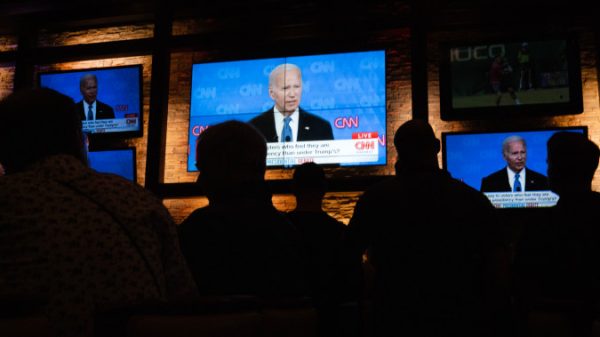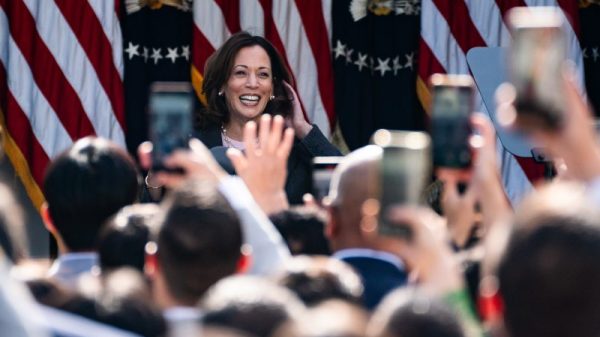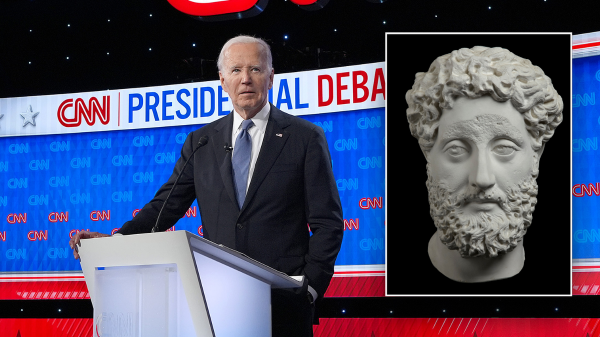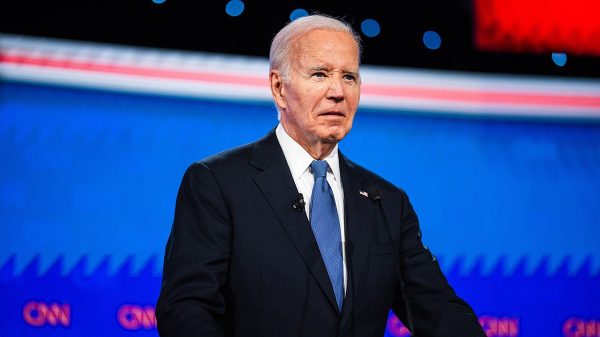If there is to be a genuine turning point in the presidential campaign, it could come Thursday night in Atlanta, when President Biden and former president Donald Trump meet for the earliest and what could be one of the most consequential political debates in history.
Though there have been some predictable attempts to lower expectations, the two candidates and their allies have spent time and money portraying each other in the most negative light possible: Trump as an unhinged felon on the one hand; Biden as a frail and not mentally sharp incumbent on the other.
By the end of their 90-minute encounter, whoever has done the more effective job of countering those depictions could be judged the winner. The debate is being called Biden’s best opportunity to change the trajectory of the campaign, but both candidates have much to gain or lose by their performance. The debate will be hosted by CNN, with no studio audience, but major broadcast networks and cable channels will simulcast it as well.
For the better part of a year, the contest between Biden and Trump has been a flat line in the polls, with Trump holding the narrowest of advantages in national polls and a slightly larger advantage in the battleground states of Pennsylvania, Michigan, Wisconsin, Georgia, Arizona and Nevada. This has made Democrats increasingly nervous. Why? Because Biden never trailed Trump in Washington Post-ABC News national polls in 2020.
Recently, there has been some movement in Biden’s direction. It has come since Trump was convicted of 34 felony charges in the New York trial involving hush money payments to an adult-film actress and the falsification of business records. The movement is incremental at best, leaving the two candidates still in a statistical dead heat nationally. The battleground states remain competitive, though Trump has had a narrow advantage in more of them than Biden this year.
An aggregation of national polls in June, compiled by The Post’s polling unit, currently shows Biden leading Trump in a two-way race by two-tenths of a percentage point. In March, just ahead of the president’s State of the Union address, Trump was leading by 1.2 percentage points. With third-party candidates included, the current poll average shows the two tied, compared with a Trump lead of six-tenths of a percentage point in May. Overall, a small change.
One closely watched polling average produced by FiveThirtyEight showed Biden leading Trump by two-tenths of a percentage point, 40.7 percent to 40.5 percent as of Friday. Robert F. Kennedy Jr. was at 9.7 percent in this aggregation. On the day before his conviction in New York, Trump was leading in this average by 1.2 percentage points.
Another popular poll aggregator, RealClearPolitics, shows Trump leading by half a percentage point. Just ahead of Biden’s State of the Union, Trump’s lead was 2.3 percentage points; on the day before his conviction, his lead was 1.2 percentage points. With third-party candidates included, Trump leads by 1.3 percentage points. RealClearPolitics noted on Friday — perhaps as a reality check to remind people that 2024 is not 2020 — that at this time in 2020, its average of polls showed Biden leading Trump by 9.8 percentage points.
Nate Silver, the founder of FiveThirtyEight, who left the firm last year, posted on X that by one calculation, Biden had gained “eight-tenths of a percentage point since the conviction, which isn’t nothing.”
Democratic strategist Simon Rosenberg, who has been more bullish about Biden’s position than many other Democrats, posted on X that Biden has gained in polls recently. “Election appears to be changing now,” he wrote. Perhaps.
One poll that drew attention recently came from Fox News. The survey showed Biden up two percentage points, 50 percent to 48 percent, after being a point behind Trump in the organization’s poll in May and trailing by five points, 50 percent to 45 percent, in March. Biden’s two-point lead is within the poll’s margin of error.
Around the same time as the Fox News poll, a new NPR/PBS/Marist poll was released. It showed movement in a different direction, but it did not get as much attention. This poll showed Biden and Trump tied at 49 percent each, compared with a Biden lead of two percentage points in late May.
Stories about polls abound, as news organizations attempt to analyze different parts of the electorate. The Post recently published a major survey of what are called the “Deciders”: voters in the battleground states who are not firmly committed or whose voting history leaves open the question of whether they will vote for president in November.
That poll showed that many of these Deciders are more naturally part of Biden’s coalition but are considering a vote for one of the non-major-party candidates. These voters are less enthusiastic about the choice between Biden and Trump, are less likely to think their vote really matters and are paying less attention than those who are firmly committed.
Other recent stories have provided snapshots of the state of the electorate. The New York Times looked at the election through the prism of gender and did a story that said that Biden’s lead among women is smaller than Trump’s among men. The story called this “a warning for Democrats.”
A few days earlier, the Wall Street Journal focused on older voters and said they could be Biden’s “secret weapon” against Trump this fall. Voters age 65 and older are among the most reliable and consistent voters in the electorate, and Republicans have won voters age 65 and over in every election since 2000.
The Journal story said that in its national and swing-state polls this year, Biden has been getting about 48 percent of those voters — about what he got in 2020 — and Trump is getting about 46 percent, down from the estimated 51 percent he got in 2020.
More than a few stories have focused on how support for Biden has slipped among Black and Hispanic voters, as well as among younger voters in general. A USA Today/Suffolk University poll of Black voters in Michigan and Pennsylvania showed Biden’s support lagging significantly when compared with 2020. It’s not that Trump is all that popular with these voters, but 4 in 10 or more currently say they are backing the former president or one of the third-party candidates, or remain undecided.
Democratic strategists, who spoke on the condition of anonymity to offer candid analysis of the race, cited several factors for the tiny shift toward Biden — even though several said they did not see it as significant and noted that Biden’s path to an electoral college majority is challenging, given the state of play in the battleground states.
One thought offered is that some voters who have been undecided or looking at a third-party candidate are now looking at Biden more favorably or are more worried about Trump. Related to that is that the conviction of Trump was a moment that told voters it was time to wake up and start paying more attention.
The Biden campaign has gone all in with its attack on Trump as unhinged, worse than he was as president and more dangerous if reelected. It is the message now carried in advertising and daily emails, by television surrogates, and on the campaign trail by the president himself. Trump has played into this attack by his own rambling and grievance-filled performances at his campaign rallies.
This will be part of the Biden message in Thursday’s debate, and his advisers hope that Trump will struggle to remain disciplined and focused for 90 minutes on the issues that most help him — immigration, inflation and a current perception that things in the country were better when he was president than they are today. Will he validate what the Biden camp is saying about him by going off-script, as he has been doing at his rallies?
But Democrats worry as much or more about how well Biden will hold up over the 90 minutes. He obviously can’t afford any gaffes or moments that reinforce widespread concerns about his age and fitness to serve four more years.
Given the lack of any real movement in the polls so far this year, it’s questionable whether Thursday’s debate will provide a significant jolt to the electorate that fundamentally changes them, absent a major mistake. But it nonetheless could be consequential. In a year in which margins are likely to be slender, even a small boost for one of the candidates could be significant — and a weak performance more costly than usual.






























